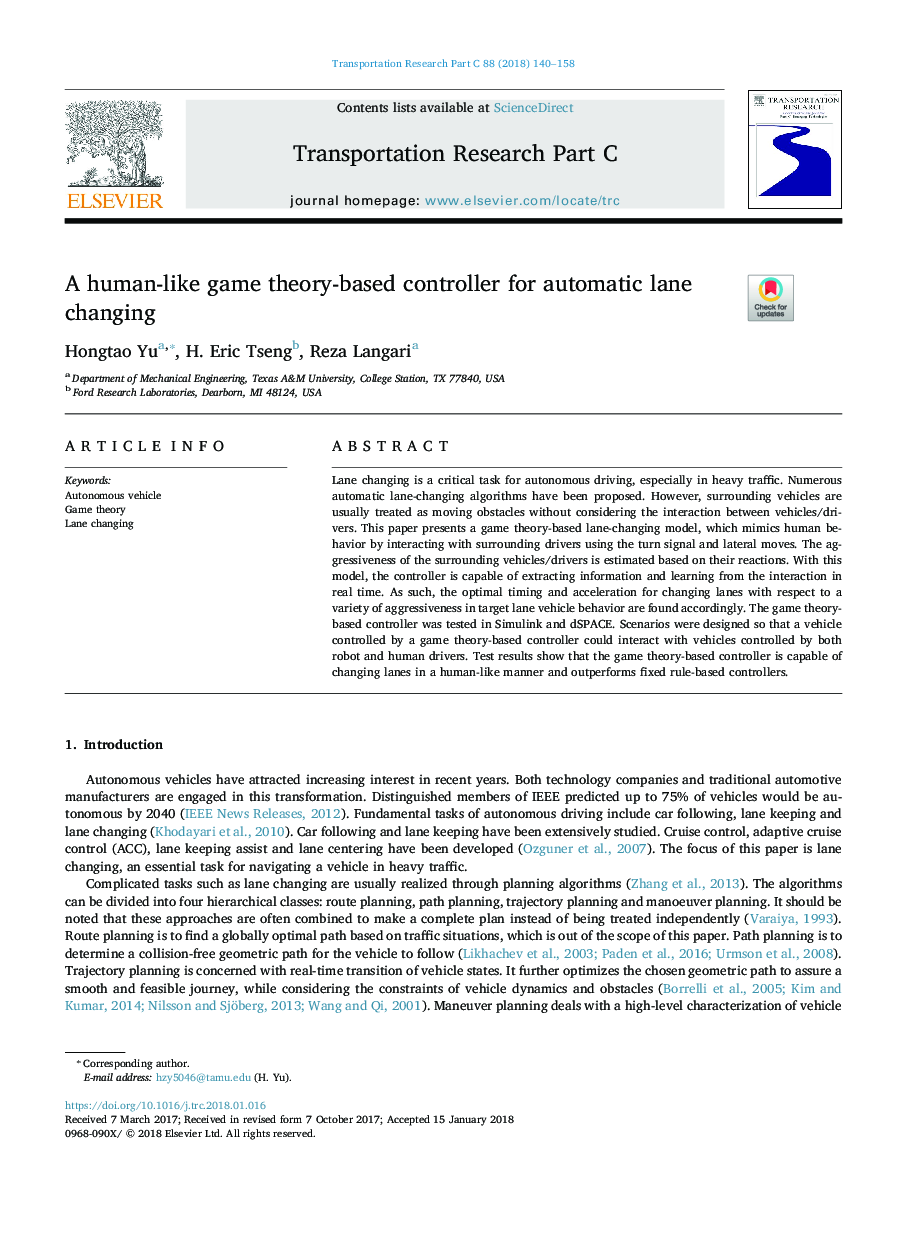| Article ID | Journal | Published Year | Pages | File Type |
|---|---|---|---|---|
| 6936149 | Transportation Research Part C: Emerging Technologies | 2018 | 19 Pages |
Abstract
Lane changing is a critical task for autonomous driving, especially in heavy traffic. Numerous automatic lane-changing algorithms have been proposed. However, surrounding vehicles are usually treated as moving obstacles without considering the interaction between vehicles/drivers. This paper presents a game theory-based lane-changing model, which mimics human behavior by interacting with surrounding drivers using the turn signal and lateral moves. The aggressiveness of the surrounding vehicles/drivers is estimated based on their reactions. With this model, the controller is capable of extracting information and learning from the interaction in real time. As such, the optimal timing and acceleration for changing lanes with respect to a variety of aggressiveness in target lane vehicle behavior are found accordingly. The game theory-based controller was tested in Simulink and dSPACE. Scenarios were designed so that a vehicle controlled by a game theory-based controller could interact with vehicles controlled by both robot and human drivers. Test results show that the game theory-based controller is capable of changing lanes in a human-like manner and outperforms fixed rule-based controllers.
Related Topics
Physical Sciences and Engineering
Computer Science
Computer Science Applications
Authors
Hongtao Yu, H. Eric Tseng, Reza Langari,
